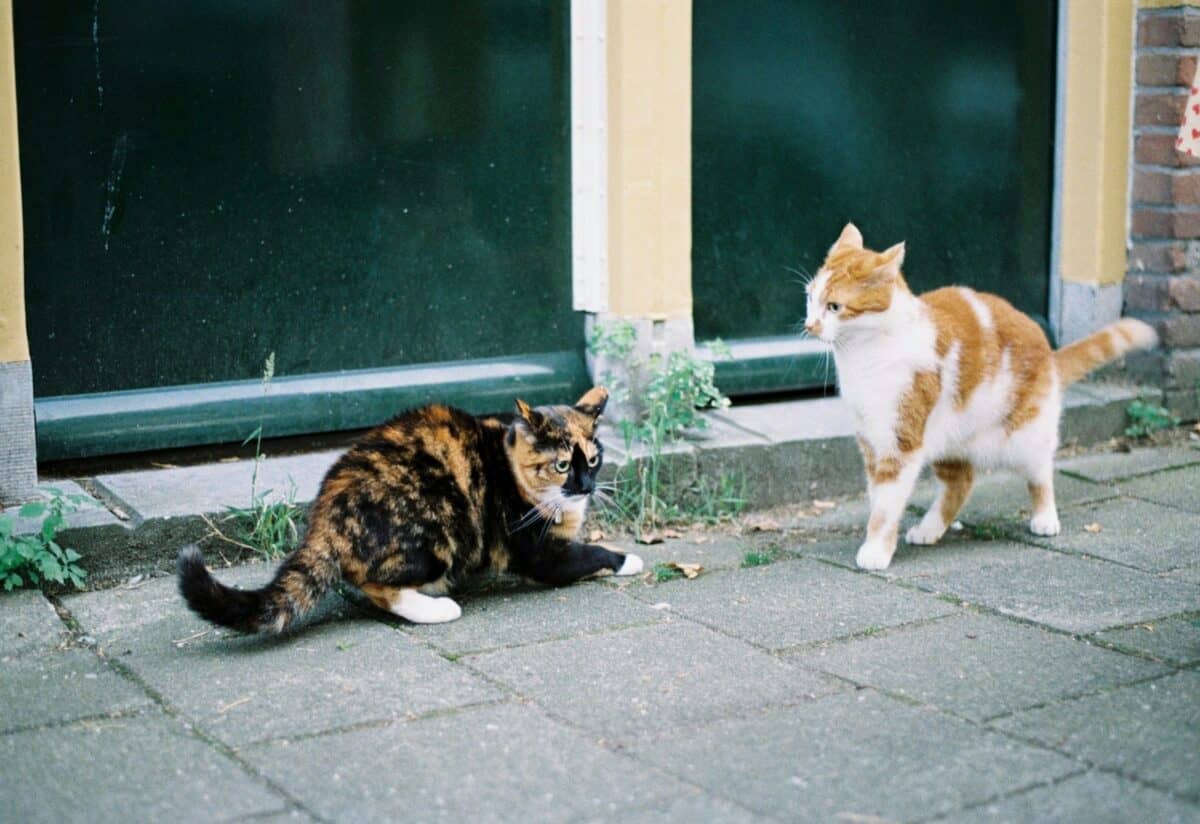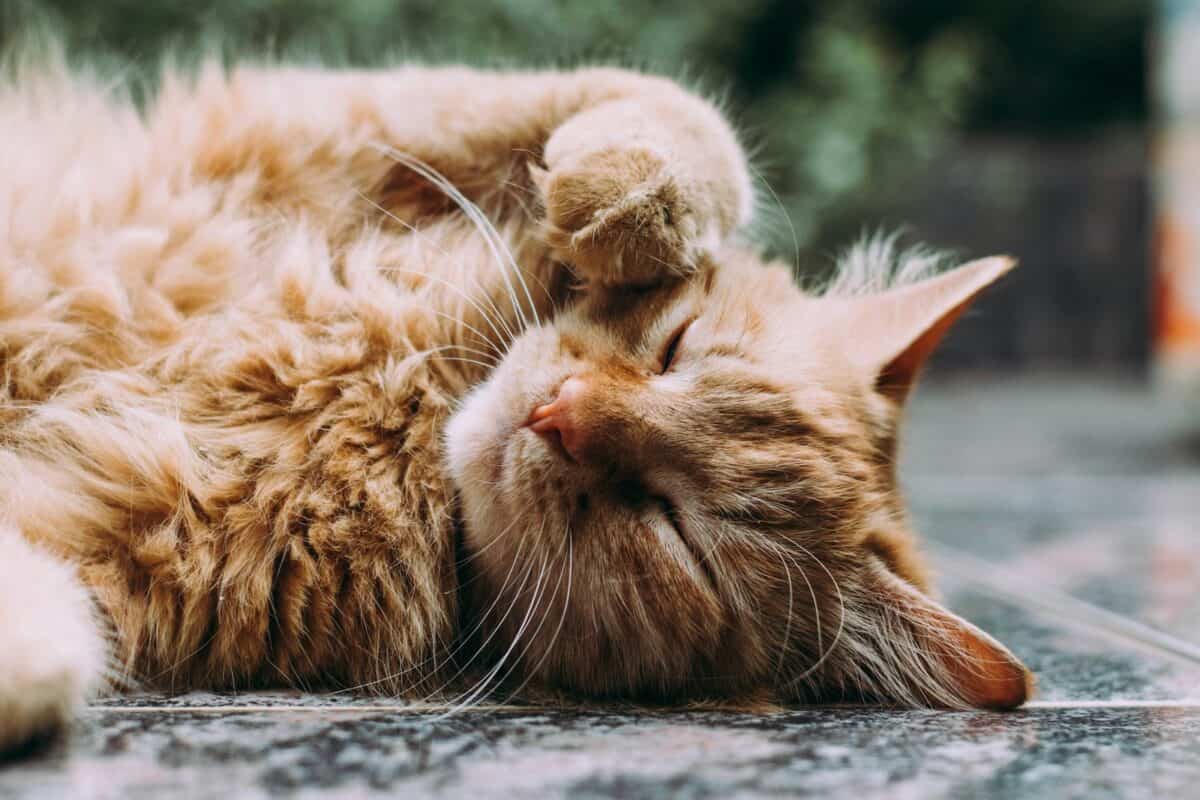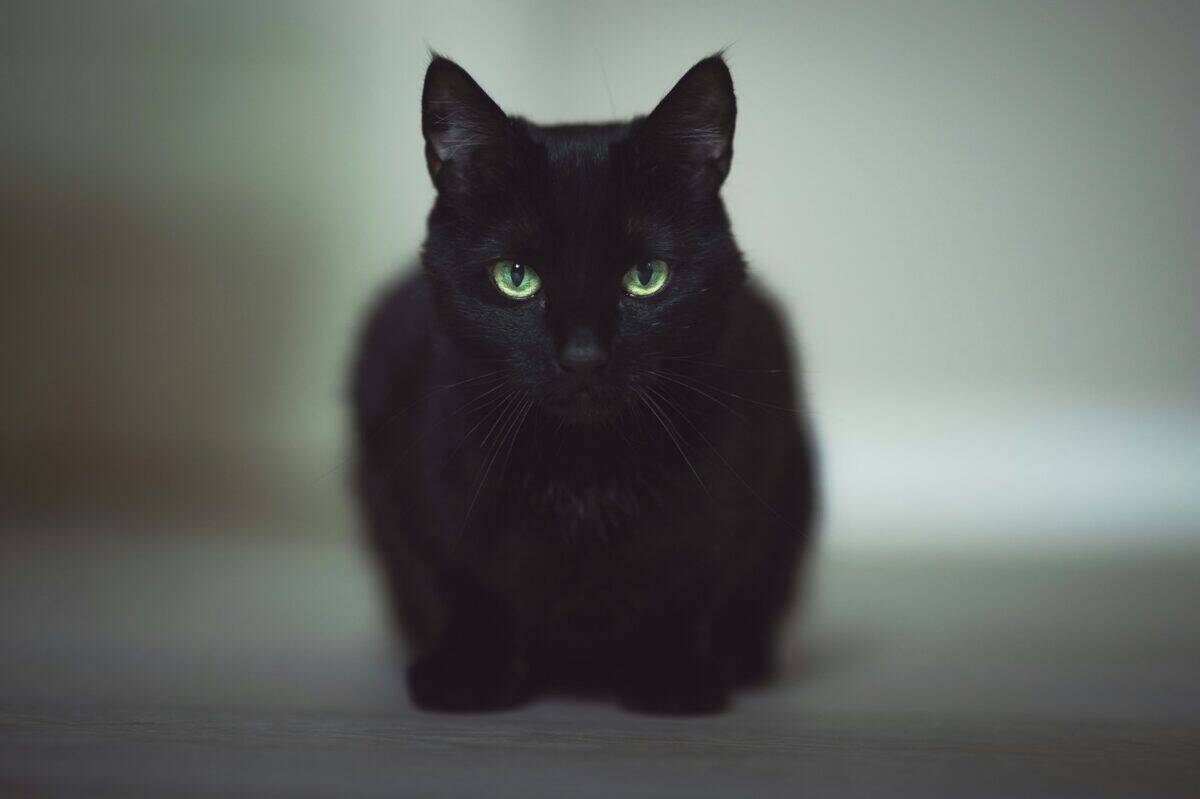Cats have been our companions for thousands of years, yet they remain somewhat mysterious and misunderstood. From ancient Egypt to modern-day internet memes, our feline friends have accumulated numerous myths and misconceptions around them. Many of these beliefs have been passed down through generations, becoming so ingrained in our collective consciousness that we accept them as facts. However, veterinary science and animal behavior research have debunked many of these long-held misconceptions. Let’s explore twelve common myths about cats that many of us grew up believing, and uncover the fascinating truths behind these popular feline fallacies.
Myth 12 Cats Always Land on Their Feet

Perhaps one of the most pervasive myths about cats is that they always land on their feet. While cats do possess an impressive “righting reflex” that allows them to twist their bodies mid-air to orient themselves properly for landing, this ability is not foolproof. Cats need sufficient height to complete this maneuver—typically at least 3-4 feet. Falls from very low heights may not give them enough time to position themselves correctly. Additionally, even when they do land on their feet, cats can still suffer serious injuries from falls, including broken legs, damaged internal organs, or chest trauma. Interestingly, veterinarians have observed that cats falling from medium heights (2-7 stories) sometimes sustain more injuries than those falling from greater heights, as they may not have enough time to fully relax their bodies before impact. The notion that cats are immune to fall injuries is dangerous and has led to preventable accidents.
Myth 11 Cats Have Nine Lives

The belief that cats have nine lives is perhaps one of the oldest and most widespread myths. This superstition dates back to ancient Egypt, where cats were revered and associated with the goddess Bastet. The myth was further reinforced in the Middle Ages across Europe and later solidified in English culture through a proverb: “A cat has nine lives. For three he plays, for three he strays, and for the last three he stays.” The myth likely originated from cats’ remarkable agility, flexibility, and ability to survive situations that might be fatal to other animals. Their righting reflex and general resilience contributed to the perception of supernatural survival abilities. However, the biological reality is much simpler: cats, like all mammals, have just one life. This myth, while charming, can be dangerous if it leads people to be less careful about their cats’ safety under the false assumption that they can survive almost anything.
Myth 10 Cats Love Milk

The image of a contented cat lapping up a saucer of milk is deeply embedded in our cultural representations of felines, from children’s books to advertisements. However, contrary to popular belief, most adult cats are actually lactose intolerant. After weaning, cats lose significant amounts of the enzyme lactase, which is necessary to digest lactose, the sugar found in milk. Consuming dairy products can lead to digestive upset, including diarrhea, vomiting, and stomach pain. The attraction cats show toward milk likely stems from its fat content rather than a nutritional need. Kittens drink their mother’s milk, which is nutritionally different from cow’s milk, until they are weaned at around 8-10 weeks of age. After that, water is the only liquid cats require for hydration. If you want to offer your cat a treat, specially formulated “cat milk” products are available that contain reduced lactose or are lactose-free, making them safer alternatives to regular milk.
Myth 9 Cats Purr Only When They’re Happy

Many people believe that purring is exclusively a sign of contentment in cats, but the reality is far more complex. While cats do purr when they’re relaxed and comfortable, they also purr in stressful situations, when they’re injured, during labor, and even when they’re severely ill or dying. Purring serves multiple functions in feline communication and physiology. Research suggests that purring occurs at a frequency of 25-150 Hz, which has been shown to promote healing, reduce pain and swelling, and aid in bone growth and repair. This may explain why cats purr when injured or stressed—it could be a self-soothing mechanism or a natural way to promote healing. Cats may also purr when interacting with humans to communicate needs or solicit care. Mother cats purr while nursing to communicate with their kittens, who themselves can purr when only a few days old. Understanding the various contexts of purring helps us better interpret our cats’ communications rather than assuming they’re always expressing happiness.
Myth 8 Cats Are Completely Independent and Don’t Need Much Attention

A common misconception portrays cats as aloof, solitary animals that require minimal human interaction. This myth has led many people to believe cats are the perfect “low-maintenance” pets. While cats are indeed more independent than some other pets like dogs, they are far from the self-sufficient creatures of popular imagination. Cats form strong bonds with their human companions and require regular social interaction to maintain their emotional well-being. Studies have shown that many cats experience separation anxiety when left alone for extended periods. Domestic cats need mental stimulation, play, and affection. Without adequate attention, cats can develop behavioral problems such as excessive grooming, aggression, or inappropriate elimination. The degree of attention needed varies by individual cat personality and breed, with some being more dependent than others. The misconception of the fully independent cat has unfortunately led to neglect of cats’ emotional needs. It may contribute to abandonment when owners discover their cat requires more care than expected.
Myth 7 Cats Can See in Complete Darkness

While cats have impressive night vision that far surpasses human capabilities, they cannot actually see in complete darkness. Cats’ eyes are specialized for low-light conditions, featuring several adaptations that enhance their nocturnal vision. Their pupils can dilate much wider than humans’, allowing more light to enter. They also possess a reflective layer behind the retina called the tapetum lucidum, which reflects light through the retina, giving the photoreceptors a second chance to capture available light. This is what causes the distinctive “eyeshine” when light hits a cat’s eyes at night.
Additionally, cats have more rod cells (responsible for night vision) and fewer cone cells (responsible for color vision) than humans. These adaptations mean cats need only about one-sixth the amount of light that humans do to navigate effectively. However, in environments with absolutely no light, cats are just as blind as we are. The myth of perfect night vision likely originated from observing cats’ ability to move confidently in conditions that would leave humans stumbling.
Myth 6 Cats Are Naturally Unfriendly to Dogs

The idea of cats and dogs being natural enemies is deeply embedded in our culture, portrayed in countless cartoons, movies, and expressions like “fighting like cats and dogs.” However, this supposed enmity is largely a human construct rather than a biological reality. Cats and dogs can and do form close bonds when properly introduced and socialized. Their communication styles differ—dogs are generally more direct and socially demonstrative, while cats tend to be more subtle and reserved—which can lead to misunderstandings. Early socialization plays a crucial role in how well these species interact. Cats and dogs raised together from a young age typically coexist peacefully and may even form strong friendships. Adult animals with no prior exposure to the other species may require more careful, gradual introductions. Breed characteristics also influence compatibility; some dog breeds with strong prey drives may be more challenging to integrate with cats. The myth of inherent animosity has unfortunately prevented many households from enjoying the benefits of having both species as pets.
Myth 5 Black Cats Bring Bad Luck

The superstition that black cats bring bad luck has persisted for centuries, particularly in Western cultures. This harmful myth originated in the Middle Ages during the witch hunts, when black cats were associated with witchcraft and the devil. Black cats were often killed alongside women accused of witchcraft, depleting their populations in parts of Europe. Intriguingly, different cultures hold contradictory views—in Japan, the UK, and parts of Ireland and Scotland, black cats are actually considered harbingers of good fortune. In ancient Egypt, all cats, including black ones, were revered. The negative superstition has real consequences: animal shelters consistently report that black cats are less likely to be adopted and wait longer for homes than cats of other colors. They’re also more likely to be victims of cruelty, especially around Halloween. Scientifically, a cat’s coat color has no bearing on its personality, health, or the “luck” it might bring. The persistence of this myth reflects how cultural beliefs can impact animal welfare, as these unfounded superstitions continue to affect adoption rates for these equally loving and deserving cats.
Myth 4 Cats Don’t Need Regular Veterinary Care

A dangerous misconception is that cats, particularly indoor cats, don’t need regular veterinary examinations because they appear healthy and are not exposed to outside risks. This myth likely stems from cats’ natural tendency to hide illness and pain, an evolutionary adaptation that would have prevented them from appearing vulnerable to predators in the wild. Unlike dogs, who often display obvious symptoms when unwell, cats may show only subtle changes in behavior that owners might miss or misinterpret. Regular veterinary examinations are crucial for detecting health issues before they become serious or untreatable. Cats need appropriate vaccinations regardless of whether they go outdoors, as some diseases can be brought into the home on shoes or clothing. They also require dental care, parasite prevention, and weight management. Preventive care is especially important as cats age and become more susceptible to conditions like kidney disease, hyperthyroidism, and diabetes. The belief that cats “take care of themselves” has led to lower veterinary visit rates for cats compared to dogs, with studies showing that cats receive significantly less medical attention despite similar health needs.
Myth 3 Pregnant Women Should Avoid All Contact with Cats

The advice that pregnant women should avoid cats entirely stems from concerns about toxoplasmosis, a parasitic infection that can be transmitted through cat feces and potentially harm an unborn baby. However, this has been greatly exaggerated and misunderstood. The reality is more nuanced: while toxoplasmosis is a legitimate concern during pregnancy, completely avoiding cats is unnecessary. The primary risk comes from handling cat litter containing feces from a cat that has been infected, typically from eating infected prey or raw meat. Indoor cats fed commercial diets rarely carry the parasite. Even for outdoor cats, the parasite is only transmissible in feces 1-5 days after initial infection. Simple precautions make cat ownership safe during pregnancy: having someone else clean the litter box (or wearing gloves and washing hands thoroughly if this isn’t possible), cleaning the box daily (as the parasite takes at least 24 hours to become infectious), keeping cats indoors, and avoiding feeding them raw meat. Additionally, many women have already been exposed to toxoplasmosis before pregnancy and have immunity. This myth has led to unnecessary rehoming of beloved pets during what should be a joyful time of anticipation.
Myth 2 Cats Steal Babies’ Breath

The disturbing myth that cats will deliberately suffocate infants by “stealing their breath” has frightened parents for generations. This superstition dates back centuries and may have originated from several misconceptions. Cats are attracted to the warmth, smell of milk, and soft bedding of a baby’s crib, and may simply have been seeking a comfortable place to sleep. In tragic cases where a cat was found near a deceased infant, the death was likely due to Sudden Infant Death Syndrome (SIDS) or accidental suffocation, with the cat’s presence being coincidental. No documented case has ever confirmed a cat deliberately suffocating a child. That said, experts do recommend keeping cats out of infants’ sleeping areas—not because of any malicious intent on the cat’s part, but simply as a precaution against accidental suffocation if a cat were to sleep too close to a baby’s face. Modern recommendations include using a crib net, keeping the nursery door closed, or using a baby monitor to supervise the area. The myth has unfairly demonized cats and created unnecessary fear, when the actual risk, when managed properly, is minimal.
Myth 1 Cats Can’t Be Trained

Many people believe that cats are untrainable, especially compared to dogs. This myth perpetuates the idea that cats are too independent or unintelligent to learn commands or behaviors. In reality, cats are highly trainable but respond to different methods than dogs. While dogs have been selectively bred for thousands of years to work cooperatively with humans, domestic cats evolved primarily as solitary hunters whose survival didn’t depend on understanding human cues. This doesn’t mean they can’t learn—just that their motivation differs. Cats respond best to positive reinforcement methods using high-value rewards and short, consistent training sessions. They can learn to come when called, give high-fives, use toilets instead of litter boxes, navigate agility courses, and even perform complex tricks. Clicker training is particularly effective with cats, creating a clear association between the desired behavior and the reward. The key difference is that cats generally need to see a clear benefit to themselves in the training, whereas dogs may work partly for human approval. Understanding these motivational differences is crucial for successful feline training. When trained correctly, cats not only learn behaviors but also experience mental stimulation that contributes to their overall well-being.
Conclusion: The Truth Behind Feline Misconceptions

Separating fact from fiction when it comes to our feline companions helps us provide better care and develop deeper relationships with them. Many of these myths originated in times before scientific understanding of cat behavior and biology, yet they continue to influence how we interact with and care for cats today. By recognizing these misconceptions, we can address the real needs of cats rather than relying on outdated or incorrect information. The persistence of these myths demonstrates how cultural beliefs can impact animal welfare, sometimes in harmful ways. As research continues to advance our understanding of feline behavior, health, and cognition, we have opportunities to replace these myths with evidence-based knowledge. Our cats deserve care based on accurate information rather than superstition or misinformation. This allows us to be better guardians for these complex and fascinating animals that share our homes and lives.
- 15 Things You Did Not Know About Owl Eyes - August 7, 2025
- 15 Times Rescue Animals Proved They Are the Best Companions - August 7, 2025
- 14 Signs Animals Experience Joy - August 7, 2025

